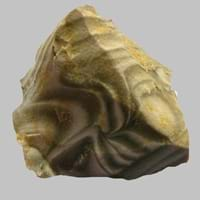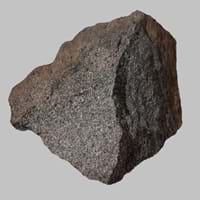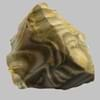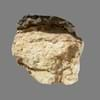Definition
Flint is a hard type of sedimentary rock that produces a small piece of burning material when hit by steel
Foidolite is a rare type of coarse-grained intrusive igneous rock with a feldspathoid mineral content greater than 60%
Discoverer
Unknown
Unknown
Etymology
From Old English flint - a type of rock mainly known for high hardness and for giving off sparks when struck
From the mineral feldspathoid which is the main content of rock
Class
Sedimentary Rocks
Igneous Rocks
Sub-Class
Durable Rock, Hard Rock
Durable Rock, Soft Rock
Group
Not Applicable
Plutonic
Other Categories
Fine Grained Rock, Opaque Rock
Coarse Grained Rock, Fine Grained Rock, Medium Grained Rock, Opaque Rock
Texture
Banded, Rough
Earthy
Color
Black, Brown, Green, Grey, Red, White
Black, Brown, Colourless, Green, Grey, Pink, White
Durability
Durable
Durable
Appearance
Glassy or Pearly
Dull
Interior Uses
Decorative Aggregates, Homes, Interior Decoration
Decorative Aggregates, Interior Decoration
Exterior Uses
As Building Stone, As Facing Stone, Garden Decoration, Office Buildings, Paving Stone
As Building Stone, As Facing Stone, Garden Decoration, Paving Stone
Other Architectural Uses
Curbing
Curbing
Construction Industry
Arrowheads, Cutting Tool, Spear Points
As Dimension Stone, Cement Manufacture, for Road Aggregate
Medical Industry
Not Yet Used
Taken as a Supplement for Calcium or Magnesium
Antiquity Uses
Artifacts
Artifacts, Monuments, Sculpture
Commercial Uses
Creating Artwork, Gemstone, In fire-starting tools, Manufacture of tools, Metallurgical Flux, Jewelry, To ignite fire, Used in flintlock firearms
Cemetery Markers, Commemorative Tablets, Creating Artwork
Types
Not Available
Not Available
Features
Clasts are smooth to touch, Easily splits into thin plates, Has High structural resistance against erosion and climate
Host Rock for Lead
Archaeological Significance
Monuments
Not Yet Used
Used
Famous Monuments
Not Applicable
Data Not Available
Sculpture
Not Yet Used
Used
Famous Sculptures
Not Applicable
Data Not Available
Pictographs
Not Used
Used
Petroglyphs
Not Used
Used
Figurines
Not Yet Used
Used
Formation
Flint is formed by the decomposition and compaction of various organisms such as sponges and diatoms under the water.
Foidolites is a fine-grained, hard rock which is a type of metasomatite, essentially altered basalt. It forms with or without crystallization, either below the surface as intrusive rocks or on the surface as extrusive rocks.
Mineral Content
Silicon
Amphibole, Biotite, Feldspar, Olivine, Plagioclase, Pyroxene
Compound Content
Silicon Dioxide
Aluminium Oxide, CaO, Iron(III) Oxide, FeO
Types of Metamorphism
Not Applicable
Burial Metamorphism, Cataclastic Metamorphism, Hydrothermal Metamorphism, Impact Metamorphism
Types of Weathering
Not Applicable
Not Applicable
Types of Erosion
Chemical Erosion, Coastal Erosion, Water Erosion
Not Applicable
Grain Size
Very fine-grained
Medium to Fine Coarse Grained
Fracture
Conchoidal
Conchoidal
Porosity
Highly Porous
Very Less Porous
Luster
Vitreous
Subvitreous to Dull
Compressive Strength
Not Available
Cleavage
Non-Existent
Perfect
Toughness
1.5
Not Available
Specific Gravity
2.5-2.8
2.86
Transparency
Translucent to Opaque
Translucent
Density
2.7-2.71 g/cm3
Not Available
Specific Heat Capacity
Not Available
Resistance
Heat Resistant, Impact Resistant, Pressure Resistant, Wear Resistant
Heat Resistant, Wear Resistant
Deposits in Eastern Continents
Asia
Azerbaijan, China, Russia
Russia
Africa
Not Yet Found
South Africa, Western Africa
Europe
Austria, Belgium, Cyprus, Denmark, France, Germany, Italy, Malta, Netherlands, Poland, Portugal, Romania, Spain, Sweden, Switzerland, Turkey, Ukraine, United Kingdom
Not Yet Found
Others
Not Yet Found
Not Yet Found
Deposits in Western Continents
North America
USA
Canada, USA
South America
Bolivia
Not Yet Found
Deposits in Oceania Continent
Australia
New Zealand, South Australia
Central Australia, Western Australia
Flint vs Foidolite Characteristics
Though some rocks look identical, they have certain characteristics which distinguish them from others. Characteristics of rocks include texture, appearance, color, fracture, streak, hardness etc. Flint vs Foidolite characteristics assist us to distinguish and recognize rocks. Also you can check about Properties of Flint and Properties of Foidolite. Learn more about Flint vs Foidolite in the next section. The interior uses of Flint include Decorative aggregates, Homes and Interior decoration whereas the interior uses of Foidolite include Decorative aggregates and Interior decoration. Due to some exceptional properties of Flint and Foidolite, they have various applications in construction industry. The uses of Flint in construction industry include Arrowheads, Cutting tool, Spear points and that of Foidolite include As dimension stone, Cement manufacture, For road aggregate.
More about Flint and Foidolite
Here you can know more about Flint and Foidolite. The life cycle of a rock consists of formation of rock, composition of rock and transformation of rock. The composition of Flint and Foidolite consists of mineral content and compound content. The mineral content of Flint includes Silicon and mineral content of Foidolite includes Amphibole, Biotite, Feldspar, Olivine, Plagioclase, Pyroxene. You can also check out the list of all Sedimentary Rocks. When we have to compare Flint vs Foidolite, the texture, color and appearance plays an important role in determining the type of rock. Flint is available in black, brown, green, grey, red, white colors whereas, Foidolite is available in black, brown, colourless, green, grey, pink, white colors. Appearance of Flint is Glassy or Pearly and that of Foidolite is Dull. Properties of rock is another aspect for Flint vs Foidolite. The hardness of Flint is 7 and that of Foidolite is 1.5. The types of Flint are Not Available whereas types of Foidolite are Not Available. Streak of rock is the color of powder produced when it is dragged across an unweathered surface. The streak of Flint and Foidolite is white. The specific heat capacity of Flint is 0.74 kJ/Kg K and that of Foidolite is Not Available. Depending on the properties like hardness, toughness, specific heat capacity, porosity etc., rocks are resistant to heat, wear, impact, etc.Flint is heat resistant, impact resistant, pressure resistant, wear resistant whereas Foidolite is heat resistant, wear resistant.





